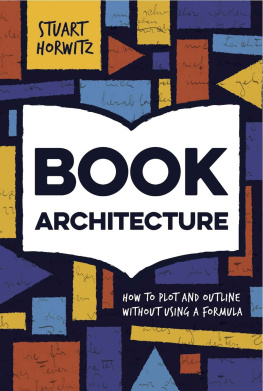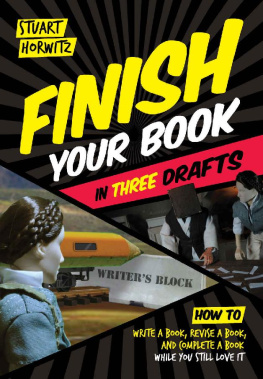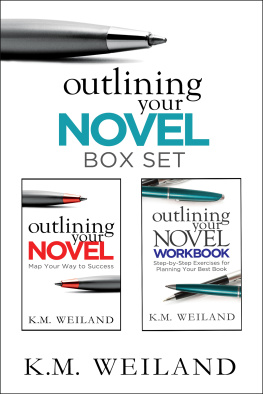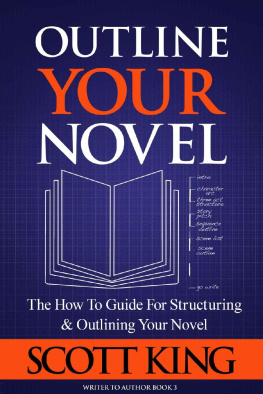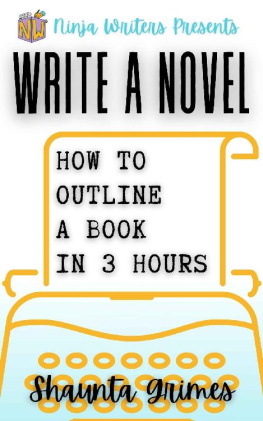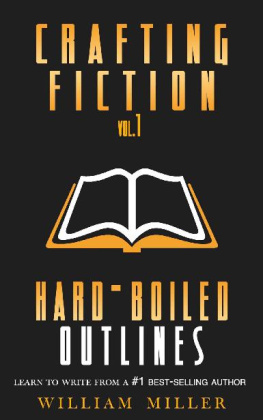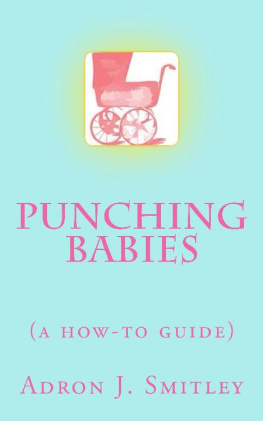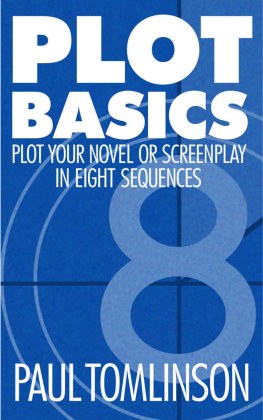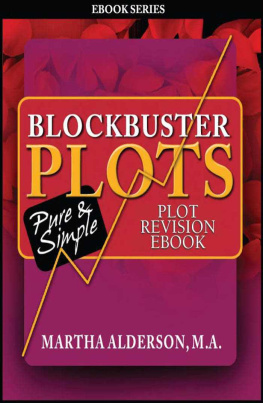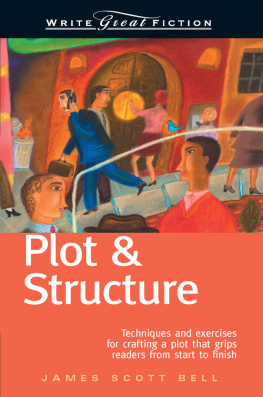Chapter Five: The Expanded Series Grid in J. K. Rowlings
Novel Harry Potter and the Order of the Phoenix
Introduction
Series is the New Plot
I n Book Architecture: How to Plot and Outline Without Using a Formula, you will learn how to create an effective plot and a clear outline for your work-in-progress, whether your work is an advanced draft or you are just starting out, and whether you are working in fiction, film and television, or creative nonfiction. You will learn a new approach to structure, and you wont have to resort to using a formula, which may seem risky! But it can be done.
I founded the company Book Architecture 15 years ago because I was tired of being called a book doctoras if I had some kind of magic pill or syringe I could inject into a manuscript that would cure all of its ills. It doesnt work that way; at least it doesnt if youre not using a formula. Writers everywhere need help building something beautiful, solid, and original, and that takes a method. This is how we do it. This is how it gets done.
You may never have heard of the Book Architecture Method. Or, you may have bought my first book, Blueprint Your Bestseller: Organize and Revise Any Manuscript with the Book Architecture Method (hereafter, BYB), but didnt look into it too closely because you didnt have enough material to organize and revise. BYB suggests you have at least 60 pages of first-draft material and preferably a hundred before you undertake its 22 action steps. By contrast, you can use the book you are holding now on a manuscript in any stage of completion. Anything you learned from my first book is applicable here, but you dont have to have any prior exposure to jump right in.
The Book Architecture Method uses three main concepts: scene, series, and theme. Lets talk about scene. The method says that if you find your 99 scenes, and you put them in the right order, then you will be all set. Thats kind of a joke, but Ive seen it happen. Please note: 99 is a placeholder because we dont yet know how many scenes your finished manuscript will have: it might have 72, or 138, etc. I am not saying your manuscript must have 99 scenes because to do so would be formulaic. What I am saying is that when we think of our scenes as comprising a certain number, and therefore separate from each other, we can get the flexibility we need to move things around, to discard some and brainstorm others.
I chose the number 99 because it is one short of a hundred. Meaning, we dont achieve unity, the ultimate goal of literary creation, by aiming for comprehensiveness. Instead, we have to seek continuity, consistency, and coherence. Dont put everything in, in other words.
Its similar to when you first start learning how to cook and you get kitchen sink syndrome, as a chef friend of mine calls it. Youre making spaghetti sauce and you spy a yellow pepper, so you dice that up and add it. Chinese five-spice powder? Sure, lets throw in a dash of that and red wine vinegar and the whole thing ends up tasting kind of like crap. Whereas if you just start with good tomatoes, good olive oil, etc. then you can taste the individual flavors and the way they come together. So it is with scene.
Your scenes are where things happen, and because something happened, your scenes are where something changes. Your scenes are where you show, dont tell, where you use description and dialogue, but they wont be animated at the level of the full-length narrative, unless you use series.
What is a series? Let me first tell you what a series is not: it is not an interrelated series of books in the same genre that have a lot of the same characters. (It is related to that, but we dont have to worry about that right now.)
Series here is defined as:
The repetition and variation of a narrative element so that the repetition and variation creates meaning.
You may have heard repetition and variation applied to art in general: the use of melody in music, the architectural pattern.
Repetition and variation of a narrative elementwhat is that? A narrative element is anything that can be identified in a readers mind as something discrete, for example, a person, a place, a thing, a relationship or a phrase. In fact, the repetitions and variations of series are how a person becomes a character, how a place becomes a setting, how a thing or object becomes a symbol, how a relationship becomes a dynamic, and how a repeated phrase becomes a key to the philosophy of the work.
Repetition and variation of a narrative element creates meaning. Its a little early for that. I promise we will come back to how series creates meaning, and we will see examples of a wide variety of series. In fact, thats all were really going to talk about.
The repetitions and variations of each series form individual narrative arcs, and we are going to practice graphing these series arcs, the first of Book Architectures three tools. We gain the skills to have these arcs interact, intersect, and collideto braid these threads of series into a whole tapestrythrough the use of series grids, the second tool. And we use the third tool of the series target to make sure that all of these series are about the same thing, because your book can only be about one thing.
And we call that one thing our theme.
Your book can only be about one thing. I say that often enough that one student said, Your book can only be about one thingthats your one thing. Another student asked, What about two things? Can my book be about two things? You know those students. To which I replied, Yes, provided that those two things are about one thing.
This is as close as I get to a should. You should be able to say what the theme of your work is in one sentence. You dont have to worry about whether that one sentence is a clich. Better to spend your time worrying about whether you believe that one sentence.
Its not how you fall in life, its whether you pick yourself up.
Do you believe that? I do. The originality comes from the clothing that you put on the theme, such as:
How a girl goes from being a drunk crying lesbian to just being a drunk lesbian.

